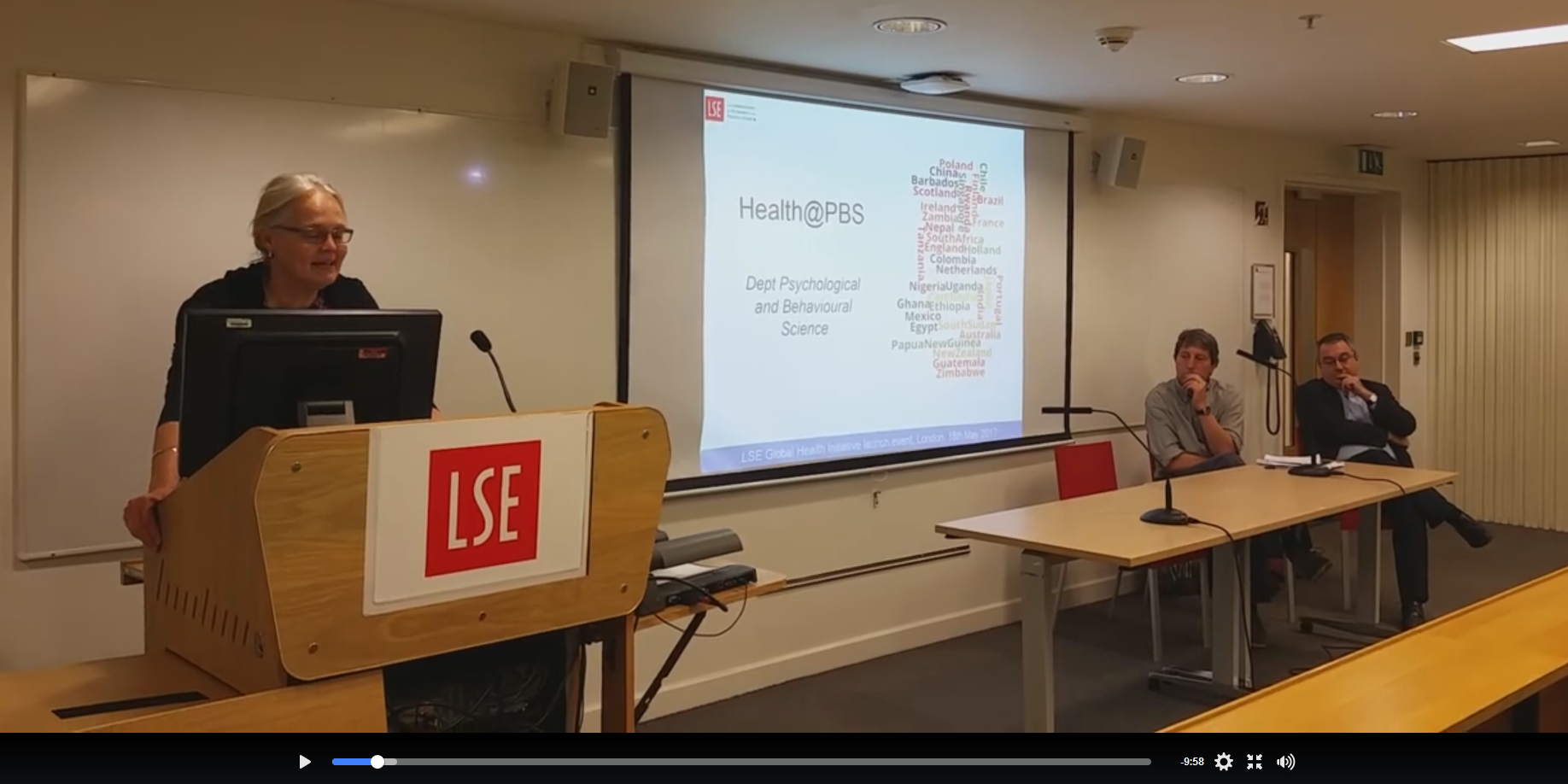Dr Tom Reader and Dr Alex Gillespie reflect on the process of developing a tool to measure organisational culture ‘unobtrusively’, and its potential value for investors
 Since May 2016, Dr Tom Reader and Dr Alex Gillespie have led an academic research project to develop a new approach to measuring corporate culture. Funded by the AKO Foundation (a UK charity),5 this research has produced the Unobtrusive Corporate Culture Analysis Tool (UCCAT).
Since May 2016, Dr Tom Reader and Dr Alex Gillespie have led an academic research project to develop a new approach to measuring corporate culture. Funded by the AKO Foundation (a UK charity),5 this research has produced the Unobtrusive Corporate Culture Analysis Tool (UCCAT).
UCCAT is a theoretically based and scientifically tested methodology for analysing and benchmarking corporate culture. Uniquely, rather than gathering employee interviews and questionnaires to assess culture, UCCAT analyses publicly available data (e.g. annual reports, financial records, press releases and databases) indicative of a company’s cultural ‘footprint’. These data points are termed “unobtrusive indicators of organisational culture” (UICs). Each UIC represents an observable and measurable aspect of organisational activity indicative of culture (e.g. research spending, customer engagement), and can be understood as a ‘dipstick’ into a company’s culture. When aggregated together in terms of cultural dimensions, UICs allow corporate culture to be assessed from the ‘outside’.
This approach is original, because academics and practitioners have tended to study corporate culture through employee self-report methodologies. Yet, these have numerous limitations: for example, social desirability, subjectivity, sampling errors, and limited longitudinal analyses. UCCAT aims to overcome these, and to provide new insights for the academic corporate culture literature, alongside a novel scientifically evaluated approach for supporting investment decisions.
Tool development
The Unobtrusive Corporate Culture Analysis Tool (UCCAT) was developed through the following phases:
- Systematic review of the organisational culture literature. 2,047 academic papers were reviewed, identifying 329 unobtrusive indicators of culture (UICs). These UICs were then conceptualised in terms of the core dimensions of organisational culture outlined as predictive of performance in the academic literature. For example, employee satisfaction (an outcome of an employee-focused culture) has been unobtrusively measured using reviews left by current and former employees on Glassdoor6 and shown as positively associated with firm performance (subsequent Tobin’s q and ROA).7
- Initial analysis of two companies. The above identified UICs were applied to two companies in order to examine the feasibility of externally assessing corporate culture. Furthermore, through analysing publicly available company data such as annual reports, earnings call transcripts and press releases, new UICs (n=25) not previously specified within the corporate culture literature were identified. For example, a focus on long-term growth in the quarterly earnings calls was conceptualised as indicative of long-term planning.
- Generation of a preliminary cultural framework. From the above phases, an initial UCCAT framework was developed (76 UICs belonging to 8 dimensions). This was applied to assess the culture of 10 case companies. Seven of the companies were considered to be high-performers, and three were not. Researchers, blinded to the prior assessments, evaluated the corporate culture of each company.
- Item Analysis. Essential to a robust culture analysis tool is high reliability, statistical variance, face-validity, and ease-of-use. For UCCAT, we tested whether when applying the initial UCCAT framework to the 10 companies, different coders would evaluate the same companies in a similar way. Overall, with an average co-efficient of 0.65, this preliminary testing showed UCCAT to be highly reliable. Based on this analysis, and further statistical assessments of each UIC (e.g. their variance and time-taken to code), UCCAT was further refined.
- Discriminant Analysis. Using the refined tool, cultural profiles were developed for each company. The profiles were assessed to determine whether they i) reflected the companies being reported on, and ii) distinguished between high and low performers. The outcomes of this assessment, and the final version of UCCAT, are reported below.
The Unobtrusive Corporate Culture Analysis Tool (UCCAT)
The final UCCAT tool consists of 60 unobtrusive indicators of culture (UICs) which are grouped into 6 dimensions of corporate culture (with 10 UICs used to measure each dimension). Table 1 presents the definition for each dimension, and a single UIC indicative of it.

As can be seen in table 1, each UIC is scored in terms of being positive or negative. If the data is not clearly positive or negative, then the UIC is scored as indeterminate. If data is not available, it is coded as missing. Where all 60 UICs are scored for a company, this leads to two key scores.
First, for a given company, each corporate culture dimension is scored in terms of positive UICs minus negative UICs (so 6 positive indicators minus 4 negative indicators would derive a score of 2). This provides an insight into those aspects of corporate culture for which an organisation is strong or weak.
Second, for a given company, an overall corporate culture score is derived through calculating the total number of positive UICs minus negative UICs (so 40 positive indicators minus 20 negative indicators would derive a score of 20). This provides both an overall assessment of corporate culture (in terms of positivity), and is used to benchmark companies against one another.
Findings from the case studies
Three key observations can be made from the results of the case studies. The anonymity of the companies examined is reserved.
First, the corporate culture profiles generated through UCCAT appear to discriminate between companies. For example, the sample’s two joint overall top performers had 23 more positive than negative indicators compared to the sample average of 7.3. They were also top performers in the dimensions of Transparency, Governance and Customer Focus, for instance with online archives of accessible company documents going back 28 years. Conversely, the company with the sample’s poorest overall performance had 28 more negative than positive indicators: with Governance, Transparency, and Planning being particularly problematic.
Second, UCCAT provides specific insights for understanding the culture of companies. For example, one of the strongest performing companies (e.g. in terms of Employee Focus and Transparency) performed poorly on the dimension of Customer Focus. Conversely, one of the weakest companies (e.g. in terms of Governance, Customer- and Employee Focus) performed well on Transparency. Thus, UCCAT is able to identify cultural dimensions that should be monitored and potentially investigated for both weak and strong performers.
Third, some comments can be made about the patterns of UICs for each company. UICs such as “adapting to a negative event” focus on signs that a company is improving its culture: for example, by admitting and demonstrating willingness to learn from negative events. Other UICs focus on rarely occurring but highly concerning indicators. For example, the UIC of “adjusting CEO bonus”, which reveals problems in governance whereby failure is rewarded. Crucially, no single UIC or culture dimension can be used to determine corporate culture. Rather, overall patterns are telling, and paint a picture of corporate values and practices.
Overall, UCCAT is a reliable, theoretically derived, and easy-to-use tool that has huge potential for supporting investment decisions, and addressing important academic questions on the nature and manifestation of corporate culture. Our ongoing research will focus on testing UCCAT on a wider sample of companies, over time, in order to determine whether it can predict independent measures of organisational performance.
Dr Tom Reader is an Associate Professor in Organisational Psychology. His work examines the relationship between organisational culture and risk management, and he is an expert on the topics of safety culture, decision-making, teamwork, and incident reporting.
Dr Alex Gillespie is Associate Professor, Deputy Head of Department, and an Editor of the Journal for the Theory of Social Behaviour. He is an expert in cultural psychology, focusing on trust, communication, misunderstanding, and research methods.
- Barney, J.B. (1986). Organizational culture: Can it be a source of sustained competitive advantage? Academy of Management Review, 11(3), 656-665.
- Kotrba, L.M., Gillespie, M.A., Schmidt, A.M., Smerek, R.E., Ritchie, S.A. and Denison, D.R., 2012. Do consistent corporate cultures have better business performance? Exploring the interaction effects. Human relations, 65(2), pp.241-262.
- Berrone, P., Surroca, J. and Tribó, J.A., 2007. Corporate ethical identity as a determinant of firm performance: A test of the mediating role of stakeholder satisfaction. Journal of Business Ethics, 76(1), pp.35-53.
- Kumar, V., Jones, E., Venkatesan, R. and Leone, R.P., 2011. Is market orientation a source of sustainable competitive advantage or simply the cost of competing?. Journal of marketing, 75(1), pp.16-30.
- The AKO Foundation is a UK charity founded by Nicolai Tangen and which is ultimately funded from the profits of AKO Capital. The primary focus of AKO Foundation is the making of grants to projects in the areas of education and the arts and it has, since its inception, been funded by approximately £45.5 million. Recipients of funding include Teach First, Strømme Foundation and Ark. For more details on AKO Foundation and entities supported by the Foundation, see http://www.akocapital.com/40/ako-foundation
- com, a website on which current and former employees provide unsolicited reviews of companies and company management.
- Huang, M., Li, P., Meschke, F., & Guthrie, J.P. (2015). Family firms, employee satisfaction, and corporate performance. Journal of Corporate Finance, 34, 108-127.






1 Comments